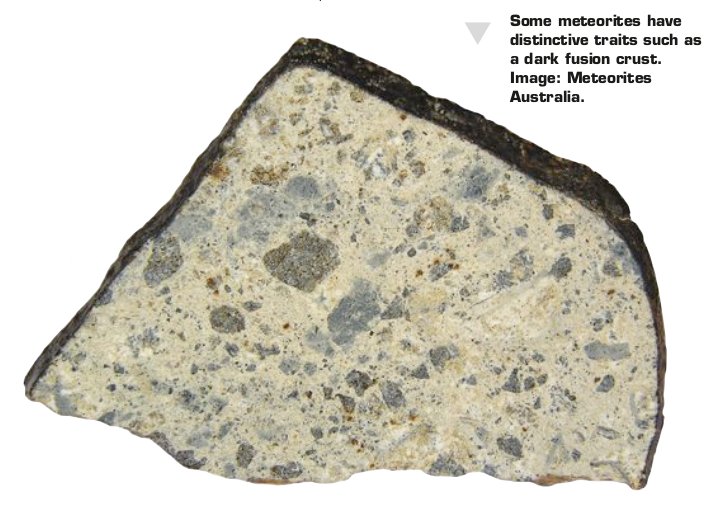Back Down2Earth Booklet - Identification
Click here for the PDF Download of this booklet
Next Chapter: Where in the Solar System?
Meteorite Spotting
Meteorite hunters classify their bounty as either ‘falls’ or ‘finds’. Falls are witnessed as fireballs streaking through the sky, burning up with the friction of the atmosphere, fragmenting and showering their cosmic riches over many square kilometres, which are then hunted down. An example fresh in the memories of many meteorite fanatics was the chance event of asteroid 2008TC3 being identified just hours before it plummeted through Earth’s atmosphere in October 2008, exploding about 37 km above the Nubian Desert in Sudan and spraying around four kilograms worth of rare ureilite-class meteorite over the desert. Around 300 fragments from the exploded meteorite were retrieved during subsequent expeditions weeks and months later.
Finds, on the other hand, are often stumbled upon accidentally, many years or even centuries after they fell. Dedicated meteorite hunting trips, especially to places like deserts or the Antarctic, where the meteorites’ characteristic dark black shell stands out against the desolate surrounds, turn up the majority of ‘finds’. That’s because these environments undergo slow change, preserving these rocks for tens of thousands to millions of years, compared with the 100 years or so it takes to break down a rock in wet climates, such as the UK, for example.

Think you have found a meteorite? Click here for guidelines to help classify it as a meteorite or a meteorwrong!
Next Chapter: Where in the Solar System?


